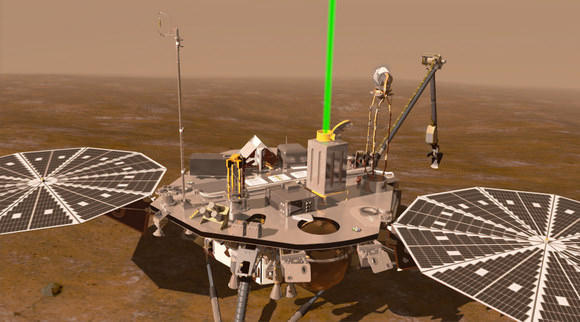[/caption]
Starting today, the Mars Odyssey orbiter will be listening once again for the Phoenix Mars Lander, lending an ear to hear if Phoenix has come back to life. Until May 21,Odyssey will listen for a signal from Phoenix during 61 flights over the lander's site on Mars' northern arctic region. Earlier attempts to detect a transmission from the lander -- totaling 150 overflights in January, February and April – were not successful.
NASA decided to add another round of listening sessions that weren't originally scheduled.
"To be thorough, we decided to conduct this final session around the time of the summer solstice, during the best thermal and power conditions for Phoenix," said Chad Edwards, chief telecommunications engineer for the Mars Exploration Program at NASA's Jet Propulsion Laboratory.
Phoenix quit communicating with Earth in November, 2008, and since that time endured a long and fierce Mars winter, where it was likely encased in CO2 ice in temperatures under -150 C. The solar arrays may have cracked and fallen off the vehicle, and the electronics probably became brittle and broke in the severe cold, so the wiring boards probably are nonfunctional.
Phoenix worked superbly for five months before reduced sunlight caused energy to become insufficient to keep the lander functioning. The solar-powered robot was not designed to survive through the dark and cold conditions of a Martian arctic winter.
Northern Mars experienced its maximum-sunshine day, the summer solstice, on May 12 (Eastern Time; May 13, Universal Time), so the sun will be higher in the sky above Phoenix during the fourth listening campaign than during any of the prior ones. Still, expectations of hearing from the lander remain low. But nobody is ready to give up just yet.
We'll let you know if Phoenix phones home.
Source:
JPL
 Universe Today
Universe Today
